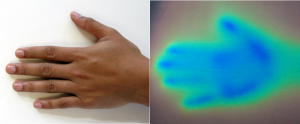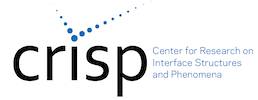Our kits are currently being reviewed and updated by a team of collaborative, innovative and interdisciplinary educators who wish to enhance the educational opportunities for students. These dedicated teachers are members of CRISP Collaborative Science for All (CCSA) as well as local educators.
Click to see the SCSU CRISP Module Template used by CCSA for improving and updating the CRISP demos and kits. Each kit page offers a CRISP developed teacher module and CRISP aligned standards (both NGSS and CCSS)
Kit Request form

The way a material behaves on the macroscale is affected by its structure on the nanoscale. Changes to a material’s molecular structure are too small to see directly, but we can sometimes observe corresponding changes in a material’s properties. The liquid crystals in this activity change color as a result of nanoscale shifts in the arrangement of their molecules. Nanotechnology takes advantage of special properties at the nanoscale to create new materials and devices. Liquid crystals are used in cell phone displays, laptop computer screens, and strip thermometers. They’re also being used to create nanosensors—tiny, super-sensitive devices that react to changes in their environment.
Adapted from NanoDays Toolkits originally created for NISEnet via the NanoDays project
This material is based upon work supported by the National Science Foundation Award Numbers 0532536 and 0940143. Any opinions, findings, and conclusions expressed in this material are those of the authors and do not necessarily reflect the views of the National Science Foundation.
Subject(s):
Temperature, Properties at the nanoscale, Properties of materials
Objectives:
Exposes students to the fact that many common substances, such as salt, sugar and ice are crystals and have repeating geometric patterns (Physical Science).
Students will understand that:
- Nanometer-sized things are very small, and often behave differently than larger things do.
- Nanoscience, nanotechnology, and nanoengineering lead to new knowledge and innovations that weren’t possible before.
Materials in this kit:
- Assortment of liquid crystal sheets
- 9v battery
- Snap connector for 9V battery
- Calculator
- Calculator display screen
- Cup of ice (not included)
Suggestions for the Teacher:
Safety:
Dispose of dead batteries according to law
Additional Resources:
Liquid Crystals Teacher Module
Liquid Crystals CRISP aligned standards
Liquid Crystals Guide from NanoDays
NanoDays Liquid Crystals website (Great resources!)
STEM Careers:
Materials Scientist
Researcher
Engineer
Environmental Engineer
Solar Energy Systems Engineers
Nano-technologist
Aerospace Engineers
Computer Hardware Engineers
Materials Engineers
Mechatronics Engineers
Nanosystems Engineers
Nanotechnology Engineering Technologists
Nanotechnology Engineering Technicians
Standards:
MS-PS1-1.
- Develop models to describe the atomic composition of simple molecules and extended structures.
PS1.A: Structure and Properties of Matter
- Substances are made from different types of atoms, which combine with one another in various ways. Atoms form molecules that range in size from two to thousands of atoms.
- Solids may be formed from molecules, or they may be extended structures with repeating subunits (e.g., crystals).
CC-3 Scale, Proportion, and Quantity
- Time, space, and energy phenomena can be observed at various scales using models to study systems that are too large or too small.
SEP 2 – Developing and Using Models
- Develop a model to describe unobservable mechanisms.
